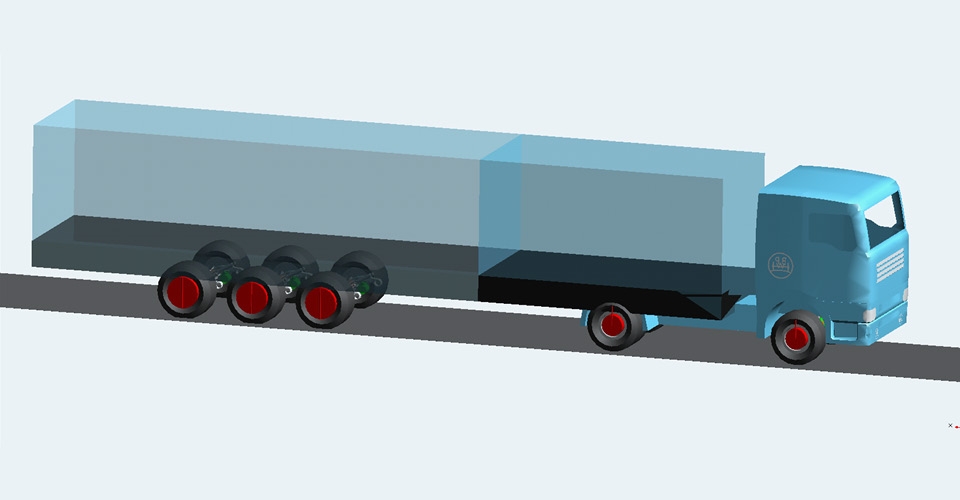Identification of dynamics- and safety-relevant states by means of digital twins


The core of the solution is an EDGE device on the trailer, which uses a sensor network to record various measured variables such as accelerations, pressures, or camera images. A digital online twin runs on the computer, which processes the data in real time in a vehicle dynamics model of the trailer. Special driving situations that require more comprehensive analysis are detected and automatically transferred to a cloud-based offline twin for more detailed evaluation.
The digital offline twin is used for the numerical simulation of operational stability-relevant driving sequences, which are identified by the online twin during the drive on the basis of specific measurement signals. Measured time series and parameters identified by the online twin are sent to a cloud system on which the entire process of the offline twin is triggered. This consists of various functions developed by the project partners and integrated together in a process chain. The central element is a detailed MBS model of the truck trailer, which is automatically adapted to the current identified state of the real vehicle with corresponding functions for the simulation of each section. Following each simulation, additional functions calculate the prognosis of the fatigue state of selected components.
In addition to the development and implementation of the MBS model and some functions of the offline twin, the LBF has been working on the identification of the condition of the chassis elastomeric bearings. Two parallel approaches were taken for this purpose. On one side, physics-based identification algorithms were developed that combine a simplified mechanical model of the axle with parameter identification algorithms. This allows the estimation of the mechanical properties of the elastomeric bearings, which are related to the condition of the elastomeric bearings. On the other hand, AI-based identification algorithms were implemented to form a direct link between available measurement data and elastomeric bearing condition. Both approaches were successfully implemented in the project.
An important variable for modeling the digital twin are the coupling forces at the KingPin, via which the trailer is attached to the tractor. Sensor instrumentation in series would be desirable from the point of view of model quality, but is ruled out due to the high technical effort involved. In the Ident project, therefore, a high-precision measurement platform was set up once to record all forces and torques at the KingPin. The models were aligned with this measurement data so that these cutting forces can be reliably determined by models in the future.
Part of the sensor network is also a sensor module that is installed as an axle capsule of a trailer wheel. A small generator powered by the wheel rotation provides enough energy to supply sensors, a powerful controller and various radio interfaces such as Bluetooth or LoRaWAN. The axle capsule sensor can either collect data for the digital twins as part of the IDENT sensor network or collect, evaluate and send sensor data via radio as a stand-alone unit.
Sponsored by the Federal Ministry of Economics and Climate Protection
Dr.-Ing. Jan-Philipp Kobler, BPW Bergische Achsen